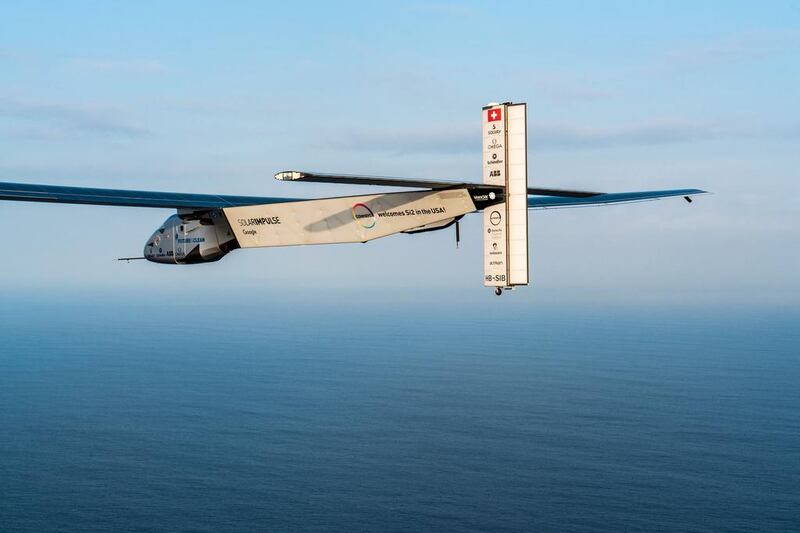ABU DHABI // The team behind Solar Impulse 2 is nearly ready to take to the skies again, nine months after damage to the plane left it grounded.
With 12 hours of test flights successfully completed, it will be ready to fly after minor preparations and reassembling the team, Solar Impulse announced earlier this week.
“We tested the plane and the window should be open for us [in] the middle of April,” said Andre Borschberg, who, along with Solar Impulse founder Bertrand Piccard, is the Swiss co-pilot behind the first round-the-world, no-fuel flight.
The Masdar-sponsored Solar Impulse 2 took off from Abu Dhabi on March 9 last year and aims to complete its circumnavigation of the Earth by returning to the UAE this summer, having used only sunlight to power its journey.
In July last year, the aircraft was grounded in Hawaii for repairs to its battery system, which was damaged on the longest leg of the journey, across the Pacific Ocean.
Mr Borschberg, supported by Mr Piccard and the team in Monaco, had been given the go-ahead on June 29 to attempt the 7,212-kilometre journey, the completion of which set a world record for the longest solo flight.
While it was grounded, with Dh80.7 million raised for improvements, the team built new batteries, which were installed prior to testing that began last month. The team hopes to take off in May at the latest.
While Mr Borschberg will start test flights at the end of this month, Mr Piccard will take on the challenge of flying from Hawaii to the west coast of the United States.
“It’s really a flight into the unknown and you have to adapt,” said Mr Borschberg. “I will sit with Bertrand and coach him on what to expect.
“I am confident that we will be able to do it.”
Each pilot has his own set of coping mechanisms for piloting long-haul flights that can last for days. Mr Borschberg uses yoga techniques to rest, while Mr Piccard prefers hypnosis.
Both have been practising their techniques for years to be able to sleep in 20-minute catnaps – the only time they have for rest in a plane that has room for just the pilot. During those intervals, the pilots activate autopilot and rest knowing that an alarm would wake them should the plane malfunction.
After flying for five days straight from Japan to Hawaii last year, one would think that Mr Borschberg, not having slept more than a few hours, would have jumped at the opportunity to land as soon as possible. When the team was given permission by Hawaiian aviation authorities to land, however, the Swiss co-pilot refused.
Instead, he flew around the islands for eight additional hours so that he could catch the sunset from the cockpit for what felt like the last time.
“I had been waiting for this flight for 12 years. Since we started the project I knew it was something very special, so I had to enjoy the last hours – the last minutes – because I knew it would be over afterwards,” he said.
“It was sad to leave the airplane, it became my friend.”
Despite the difficulties during the mission, Mr Borschberg is eager to continue, describing the plane as a pleasure to fly.
“Now we are ready to start the journey again,” he said.
nalwasmi@thenational.ae






